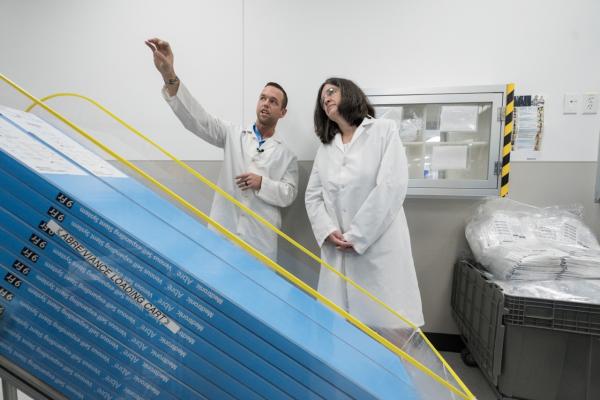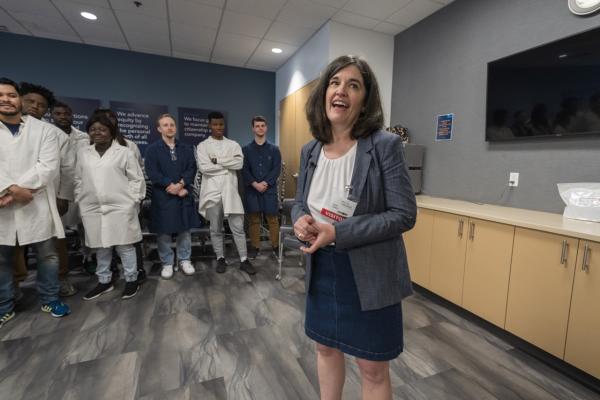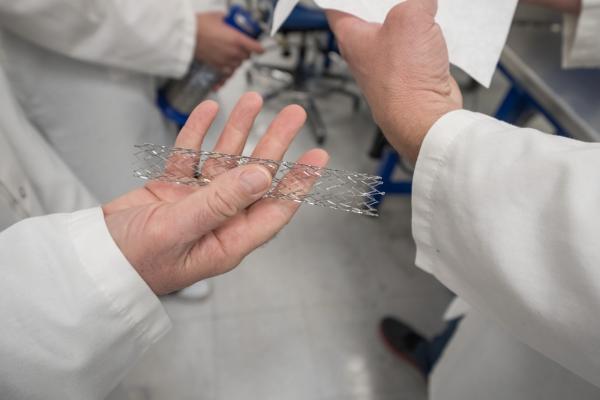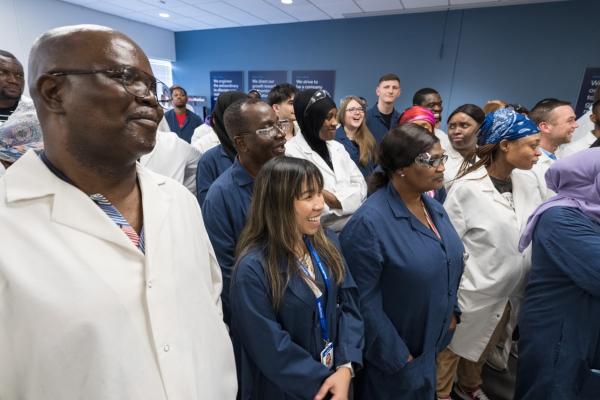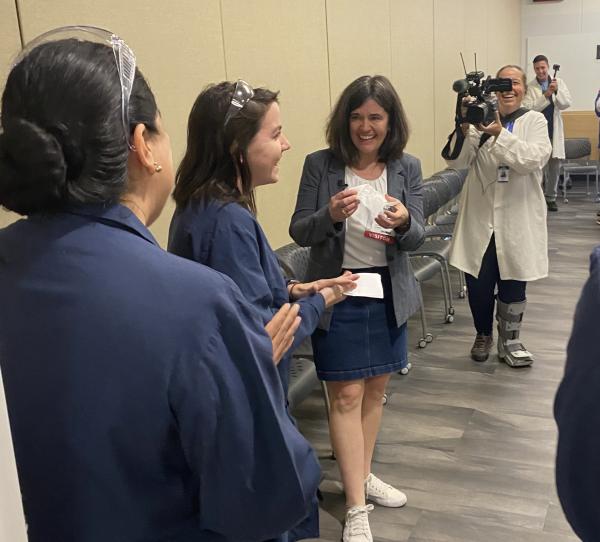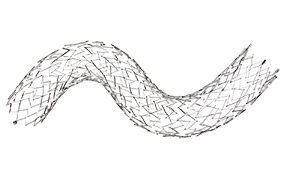How a manufacturing tour changed one patient
Meeting the engineer – and team – who made her leg stents possible
Leah Kondes understood why she needed stents implanted in her legs.
And she could tell the stents worked: days after she went to the hospital with a dangerous blood clot, her pain and swelling were gone.
But her real understanding and appreciation for the technology only came when she toured a Medtronic manufacturing facility and met the team who made her specific devices.
Three experiences on that day changed how she thinks about her Abre™ Venous Self-Expanding Stents.
‘I felt like royalty’
Leah’s first moments at Medtronic brought her to tears. On arrival, she met a room of more than 70 cheering manufacturing employees. Each one personally contributed to making her stents. It was a moment she won’t soon forget.
“It was very humbling and very moving,” Leah recalled. “I had no idea how many people touched this product that’s in my body. You could tell that they cared a lot about their work. And so that really meant a lot to me.”
She told the crowd her own story. After noticing pain in her leg while walking her dog, her leg swelled, and she eventually went to the hospital. Extensive blood clotting had formed in one of the main veins in her leg. Stents were needed to correct May-Thurner Syndrome, a condition that obstructs blood flow when an artery in the leg compresses the nearby vein.
The room full of employees laughed when she made jokes, asked her questions, and posed for pictures. For many, it was the first time they’d met a patient whose life was impacted by a product they work on every day.
“The hospital gave me a Medtronic card with the product serial numbers, and they could track back all the way to see who worked that day, on that specific shift,’” said Leah. “I feel like I have a very personal relationship with the employees of Medtronic now since their products are in my body.”
Meet the inventor
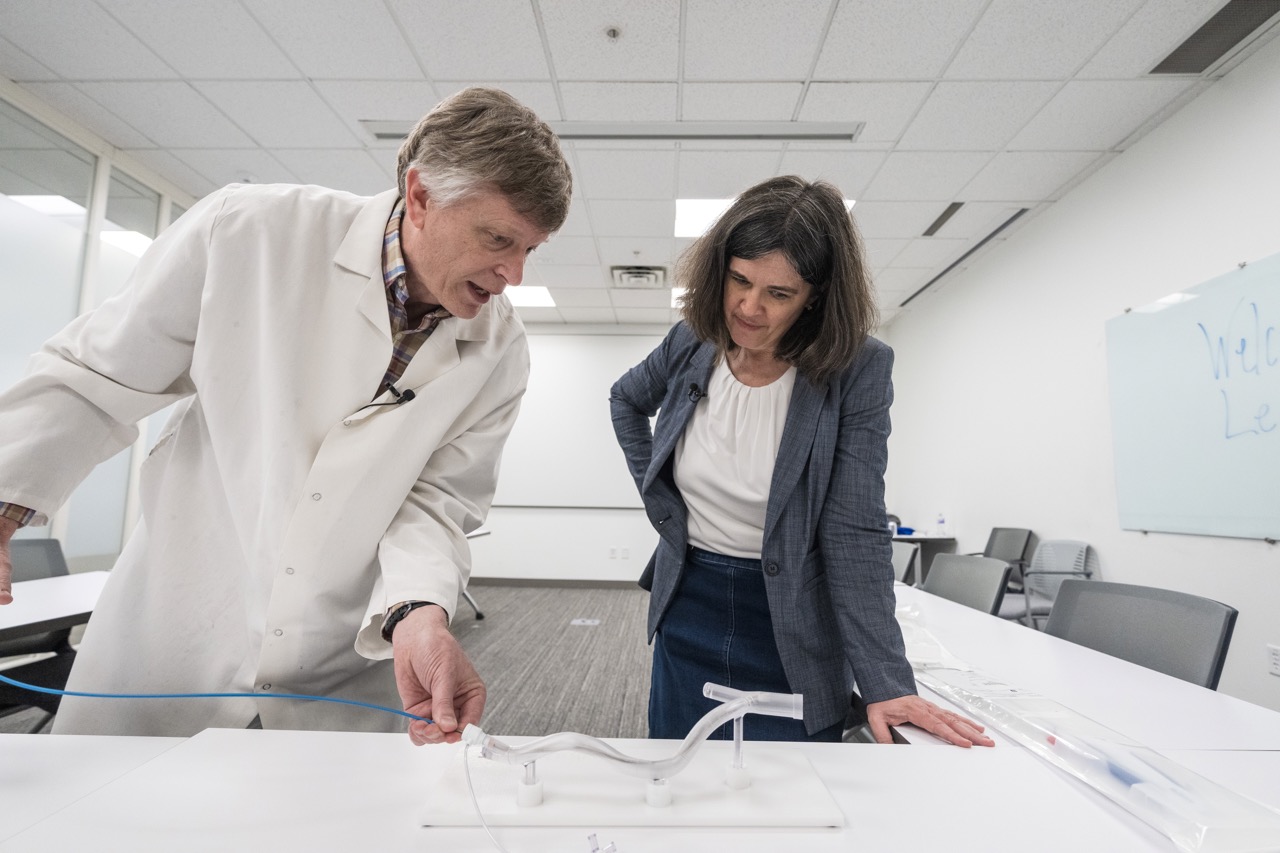
Jeff Vogel, a senior distinguished engineer in the Medtronic Peripheral Vascular Health Business, devoted years of his life to researching and creating the Abre stents.
He was in the operating room in 2017 when the first-ever patient received the venous stent he helped invent. Six years later, he was just as excited to meet one of the newest patients benefiting from the product. He showed Leah a stent identical to the ones in her leg.
“I was imagining something much smaller,” said Leah. “I honestly had no idea what was in my body!”
The product looks a lot like a finger trap toy. Jeff explained it’s made from a special metal called nitinol — flexible yet always retaining its shape to permanently keep veins open and improve blood flow.
He used a model to demonstrate how surgeons implant and deploy the device through a catheter and how body heat helps the nitinol expand from a condensed rod small enough to pass through a vein into its intended size. Leah asked questions and even got to practice deploying a stent herself.
“I'm really, really grateful for science, and we all should be,” said Leah.
How it’s made
Rarely do people implanted with healthcare technology get to peek behind the curtains to see how their devices are made. Leah was about to get a stent education few receive.
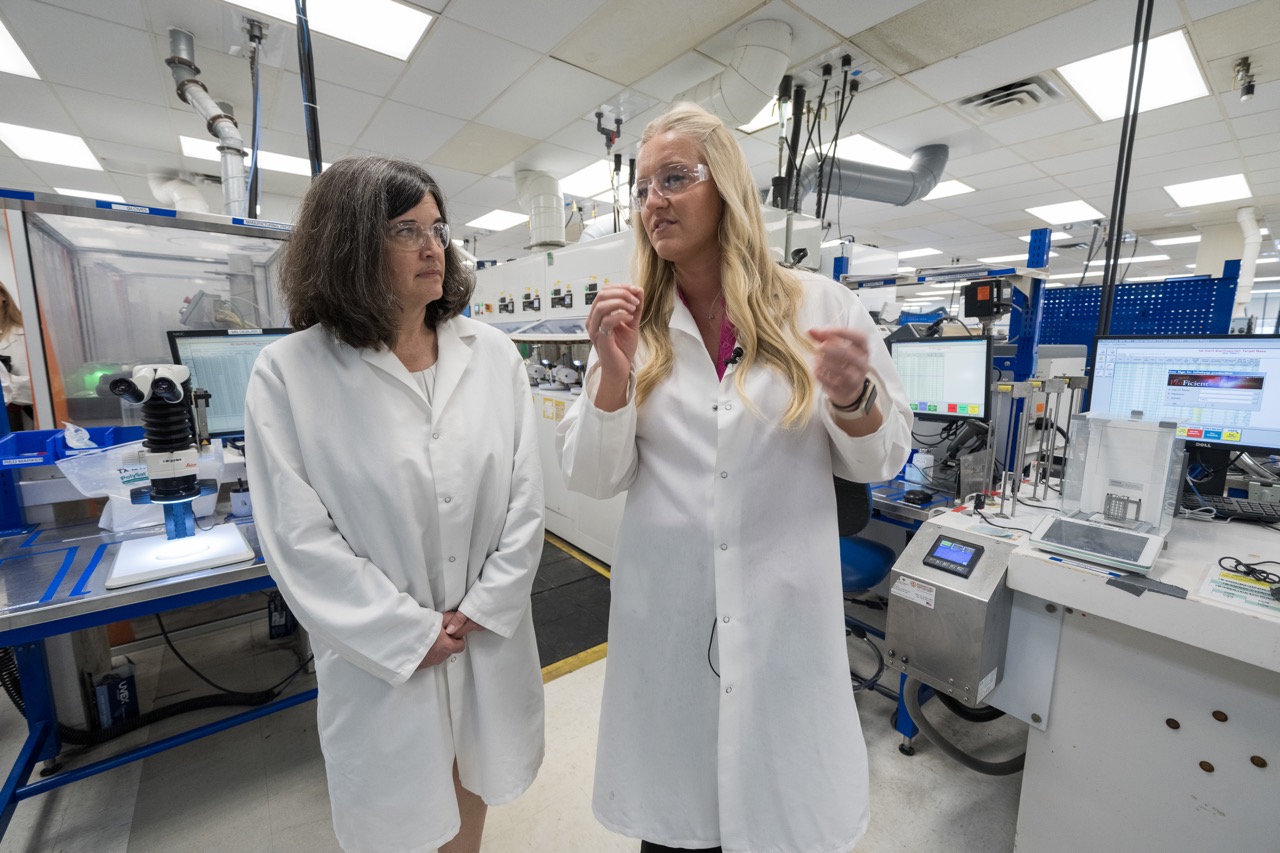
Donning safety goggles and a required protective lab coat, she toured the manufacturing floor watching as dozens of workers demonstrated the process of turning raw nitinol metals into the stents she’d learned about.
She saw the giant lasers used to cut the nitinol into its shape, the heating and cooling processes used to treat the metal, and inspections for quality every step of the way. She got to see how they were loaded into their deployment mechanism and packaged up for delivery.
One thing stuck with her throughout the tour: multiple signs in the manufacturing area that read, ‘Put Patients First.’ Those signs were referring to patients like her.
“There’s so much care to make sure that there weren't any imperfections and to make sure that everything was clean and pure. When you're in the minutia of the day-to-day work, it’s easy to forget who’s the recipient of these devices. It’s real people with families, and so I just appreciate all the work that they put into these products.”
Talk to your doctor about your treatment options. Not every patient will receive the same results.
Intended Use/Indications: The Abre™ venous self-expanding stent system (Abre™ stent system) is indicated for use in the iliofemoral veins for the treatment of symptomatic venous outflow obstruction.
Contraindications: Do not use the Abre™ stent system with patients with known hypersensitivity to nickel titanium (nitinol), with patients who are judged to have a lesion that prevents complete inflation of a balloon dilatation catheter or proper placement of the stent or the stent delivery system, and with patients in whom anticoagulant or antiplatelet therapy is contraindicated.
Potential Adverse Effects of the Device on Health: The potential adverse effects (e.g., complications) associated with the use of the Abre™ stent system include, but are not limited to, access failure, access site infection, allergic reaction to contrast medium or procedure medications; aneurysm; AV fistula; bleeding; bruising; death; device breakage; device maldeployment; edema; embolization; fever; hematoma; hypertension; hypotension, nausea, or other vasovagal response; infection; myocardial infarction, arrhythmia, or other cardiovascular insufficiency; open surgical repair; pain; pseudoaneurysm; renal insufficiency or renal failure (new or worsening); respiratory distress or pulmonary embolism; sepsis; stent fracture; stent malapposition; stent malposition; stent migration; stroke, paradoxical embolism, transient ischemic attack, or intracerebral hemorrhage; tissue necrosis; venous occlusion, restenosis, or thrombosis, within or outside of stented segment; and vessel damage, including intimal injury, dissection, perforation, or rupture.
Warnings, precautions, and instructions for use can be found in the product labeling at http://manuals.medtronic.com.
CAUTION: Federal (USA) law restricts this device to sale by or on the order of a physician.
L00106212023
Related content

